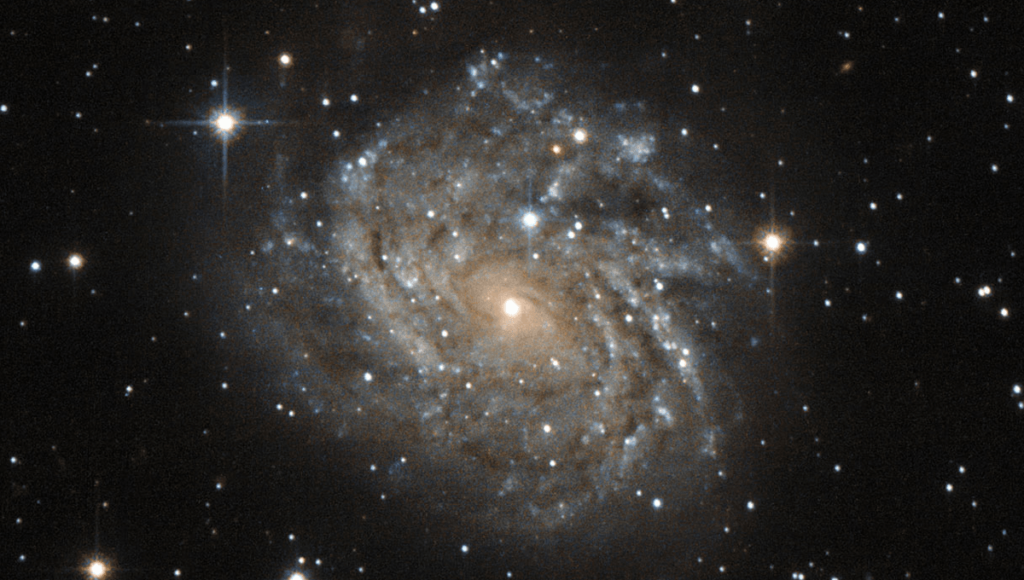A team of astronomers claims that a cluster of stars more than 13 billion years old represents the original disk from which the Milky Way formed. By studying the movements of this population, the authors reconstructed what they believe to be the shape of the proto-Milky Way galaxy. They argue that this is a relatively unusual starting point for a galaxy like ours.
Although our Milky Way galaxy is not huge, it is much larger than the average galaxy in our part of the universe, and it achieved this status by consuming small clusters of stars. Mapping the positions and movements of millions of stars with the Gaia space telescope will allow astronomers to detect clusters of stars that were once part of these cannibal galaxies, even if they have long been separated from their companions. It has become.
While this is impressive, the ultimate step in understanding the development of our galaxy is to identify the original disk structure in which the Milky Way developed before all subsequent events. This is difficult because all of the heaviest and therefore brightest stars at the time have long since burned out. Additionally, the surviving small stars will be well mixed.
Nevertheless, a team led by Dr. Maosheng Xiang of the Chinese Academy of Sciences has tracked down the oldest stars in the galaxy, identifying the differences between stars that are more than 13 billion years old and younger stars born after 12.5 billion years ago. We believe that we have succeeded in identifying this. They named the disk containing the star, which is more than 13 billion years old, Pangu.
Astronomers are still working to determine when the first stars appeared, but it was probably within 400 million years of the Big Bang, or about 13.4 billion years ago. However, these early stars were not necessarily part of well-structured galaxies, but simply points of light within relatively amorphous gas. The original structure of the Milky Way galaxy is thought to have formed 12.5 billion years ago.
Xiang and colleagues dispute that. They argue that Pangu contains stars with a total mass of about 3.7 billion times that of the Sun, and that they formed at a relatively steady rate over hundreds of millions of years. Of these, 2.2 billion solar masses survived, the rest exploded in a supernova, and 2 billion still remain in the disk. This corresponds to just 0.2 percent of the current mass of the Milky Way, but it is much larger than dwarf galaxies such as the Sagittarius dwarf galaxy.
The researchers conclude that the Milky Way reached peak star formation about 11 billion years ago, when it was producing new stars each year with a combined mass of 11 suns. This is a fairly unusual path for a galaxy that ends up looking like our own, they say.
Previous studies of the evolution of galaxies have shown that they underwent significant changes about 8 billion years ago. Stars that formed earlier have distinctly different chemical reactions and pathways than stars that formed more recently. It was more difficult to classify these early stars into finer subgroups. If Xiang et al.’s claims are correct, most of these early stars formed during the peak time they identified, 11 billion years ago.
The motion of the constituent stars suggests that the original disk was not very disk-like and began about as high as it was wide. However, over time, it changed little in length and width and flattened to about a tenth of its original height.
Simulations show that most early galaxy development occurs through violent mergers that disrupt the formation of well-structured disks, but this appears not to be the case for the Milky Way. Similarly, attempts to track the formation of spiral galaxies like ours have shown that less than one-sixth follow a similar path, with the rest suffering greater disruption.
The Sun did not form until long after these early developments had passed. We don’t know how it left a mark on the galaxy that would have different outcomes for us and our stars compared to formations in galaxies with more violent histories. Nevertheless, this is not currently a well-understood topic.
PanGu is a doubly apt name. Personally, the letter Pan means disk, and the letter Gu means old. On the other hand, Pangu appeared in Chinese mythology and was a god who played the role of separating heaven and earth.
This paper is open access at Nature Astronomy.
[H/T: La Brújula Verde]


